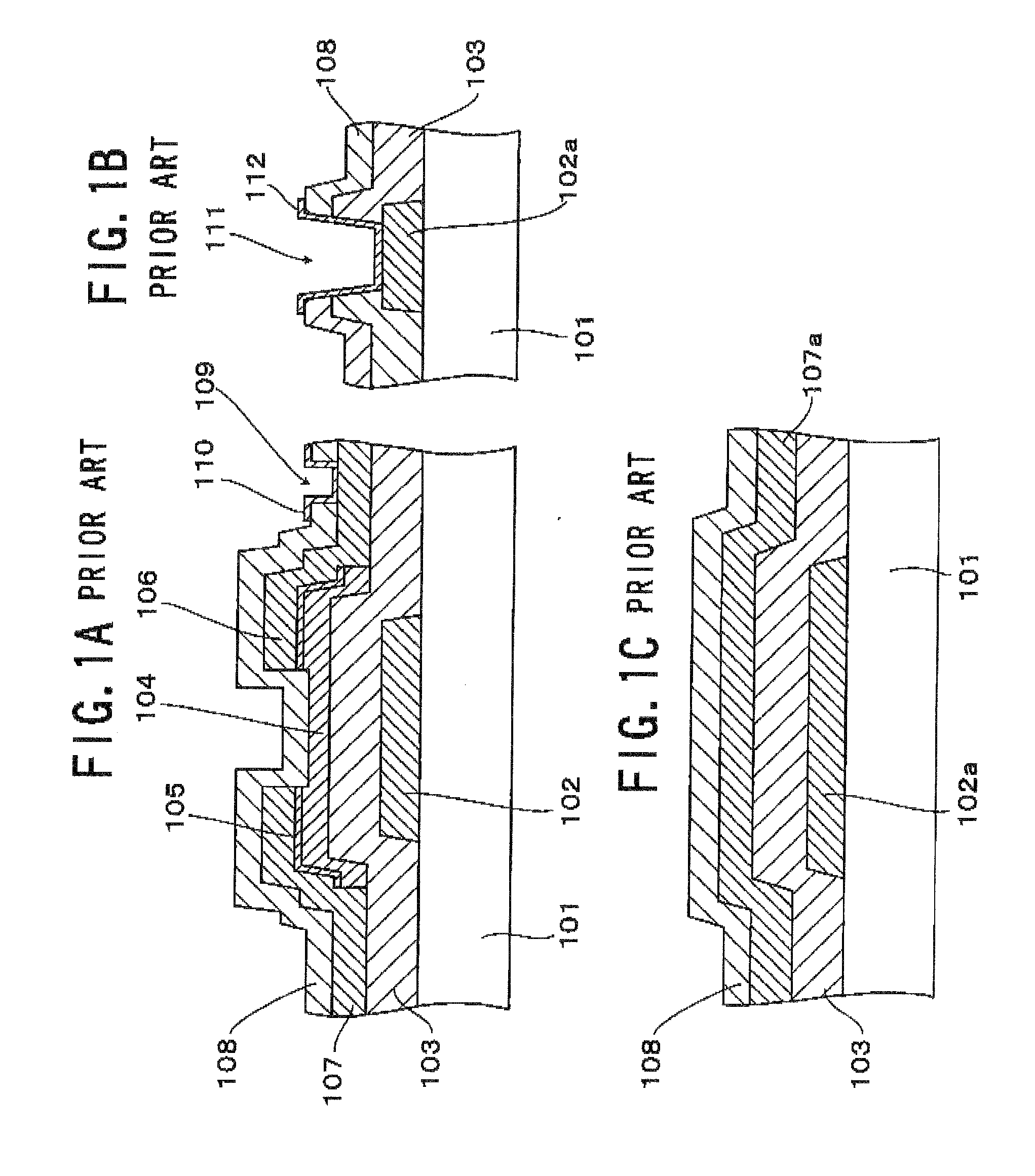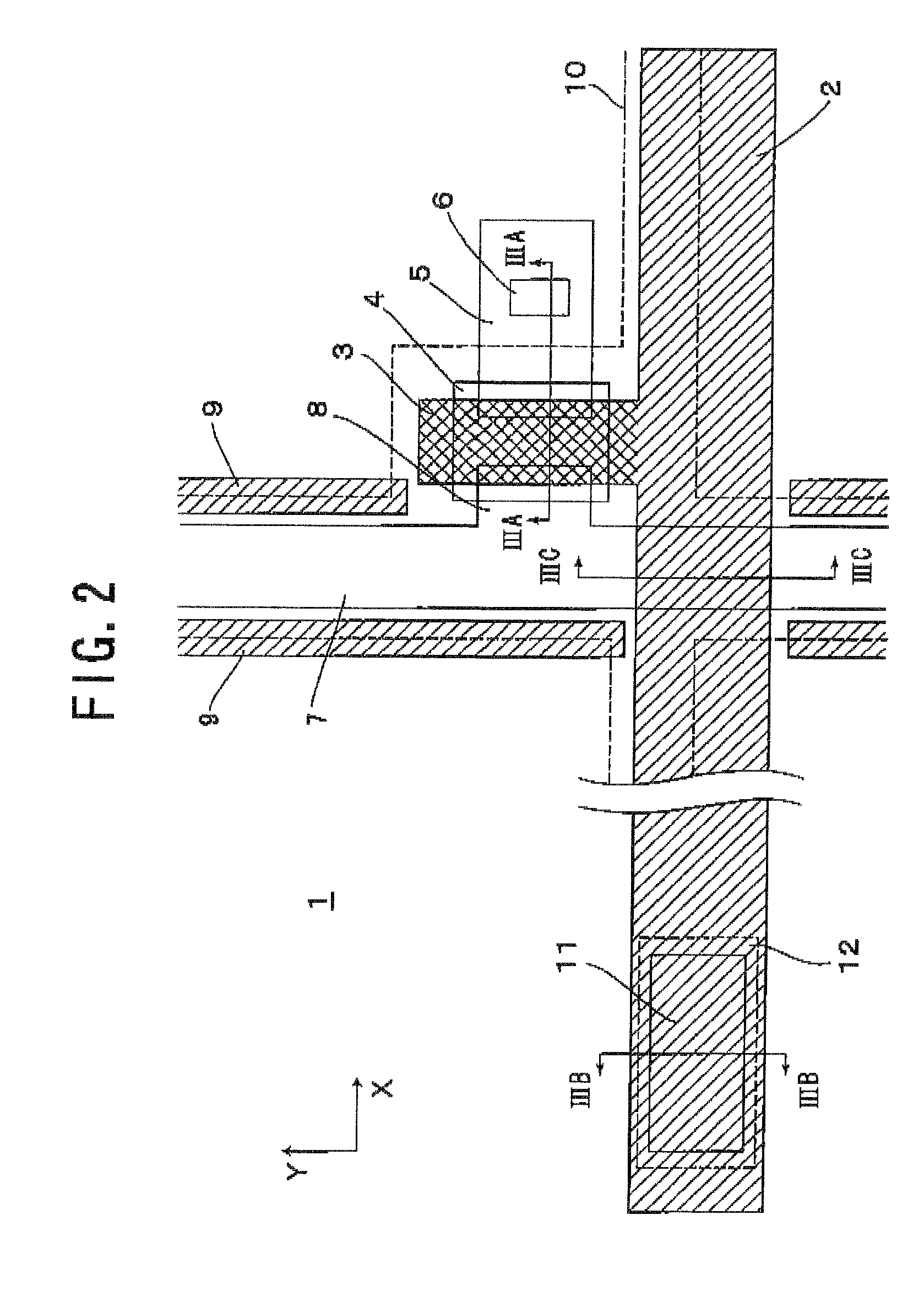Method of forming buried wiring lines, and substrate and display device using the same
- Summary
- Abstract
- Description
- Claims
- Application Information
AI Technical Summary
Benefits of technology
Problems solved by technology
Method used
Image
Examples
Embodiment Construction
[0085]Preferred embodiments of the present invention will be described in detail below while referring to the drawings attached.
[0086]A TFT substrate of a LCD device to which a method of forming buried wiring lines according to an embodiment of the present invention is explained below with reference to FIG. 2 and FIGS. 3A to 3C. These figures show the structures of the TFT section, the gate input terminal section, and the intersecting section of the gate lines and the drain lines, respectively, which correspond to one of the pixels arranged in a matrix array on the TFT substrate, respectively.
[0087]As an insulative plate 1, a glass plate is used here. However, any other insulative plate than glass may be used. On the surface of the insulative plate 1, stripe-shaped gate lines 2 extending linearly along the row direction of the matrix (i.e., the X direction in FIG. 2), and gate electrodes 3 connected to the respective gate lines 2 are formed. The gate lines 2 and the gate electrodes ...
PUM
| Property | Measurement | Unit |
|---|---|---|
| Diameter | aaaaa | aaaaa |
| Diameter | aaaaa | aaaaa |
| Surface tension | aaaaa | aaaaa |
Abstract
Description
Claims
Application Information
 Login to View More
Login to View More - R&D
- Intellectual Property
- Life Sciences
- Materials
- Tech Scout
- Unparalleled Data Quality
- Higher Quality Content
- 60% Fewer Hallucinations
Browse by: Latest US Patents, China's latest patents, Technical Efficacy Thesaurus, Application Domain, Technology Topic, Popular Technical Reports.
© 2025 PatSnap. All rights reserved.Legal|Privacy policy|Modern Slavery Act Transparency Statement|Sitemap|About US| Contact US: help@patsnap.com



